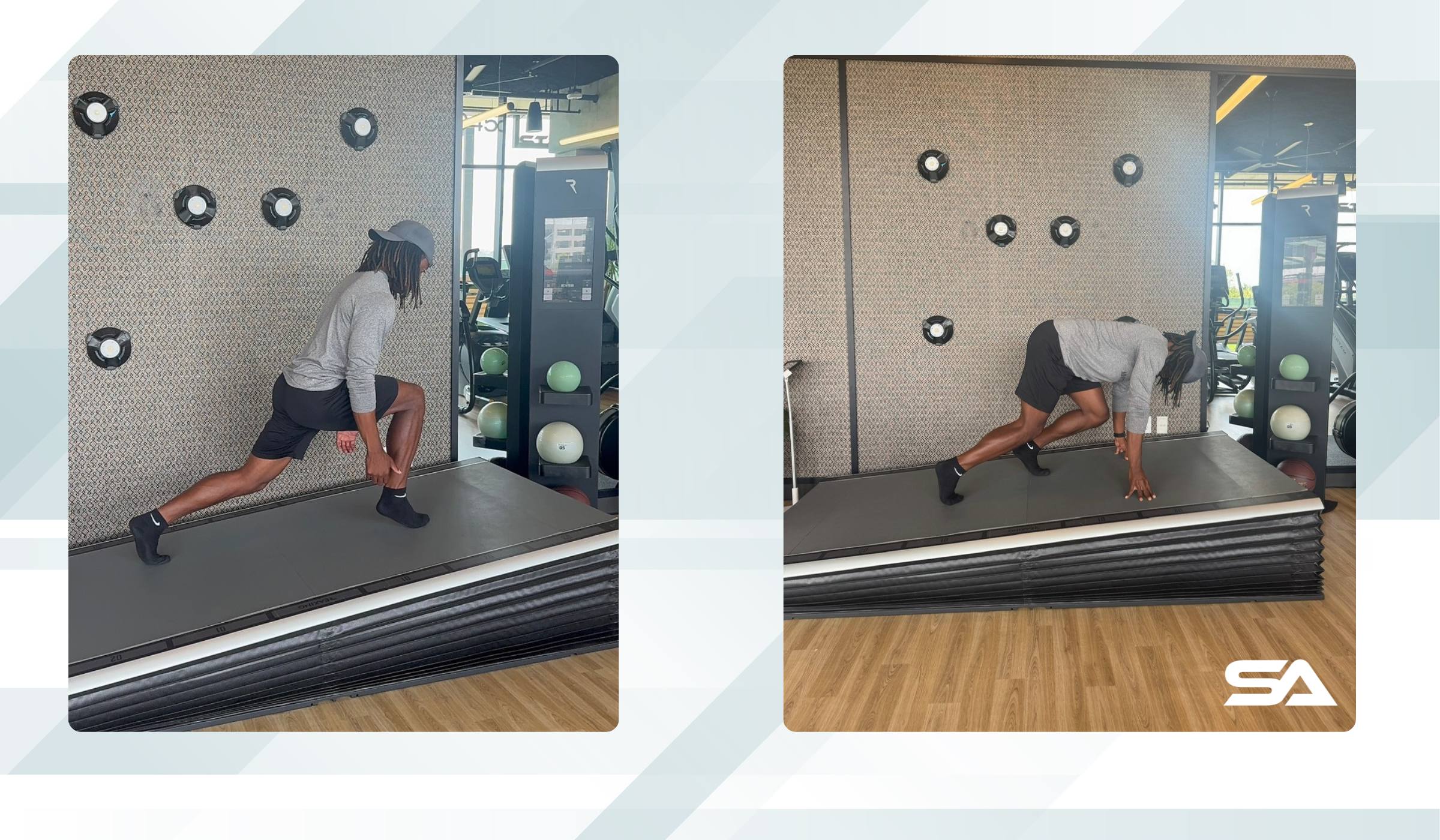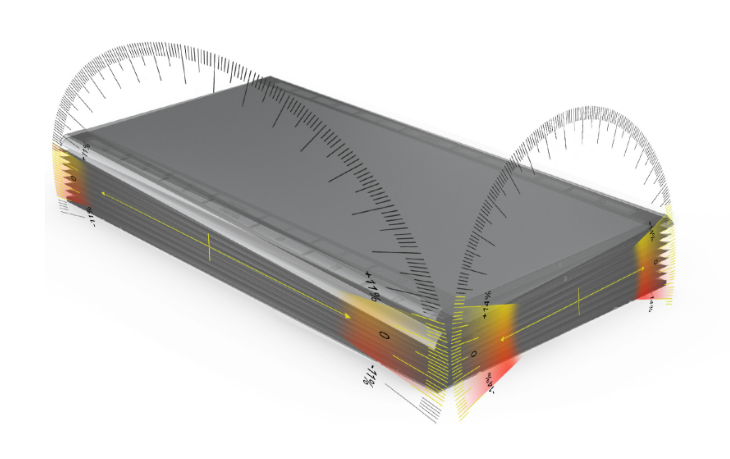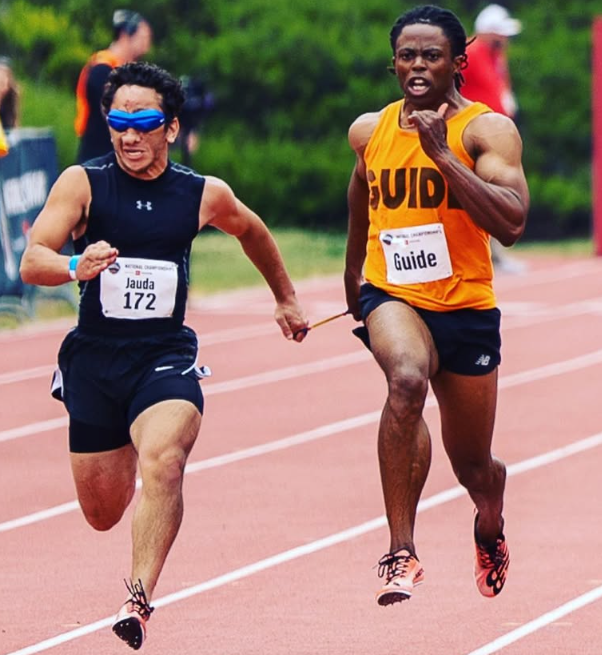

Returning to sport after injury is about more than just restoring strength and mobility—it requires retraining the body’s ability to react to unexpected challenges. This is where dynamic balance training becomes a valuable component of rehabilitation.
For dynamic balance training, we use the revolutionary Reax board.
The Reax board is the only smart floor with 3d motion technology that performs sudden inclinations in every direction. Due to the variation of the inclination and the training planes, the user is forced into constant adaptation for neuroreactive training.
Incorporating equipment like the Reax board adds these perturbations to common movement patterns—triggering reflex stabilization, engaging deep musculature, and increasing coordination under load. This mirrors the chaotic and reactive nature of live sport environments.

Injury often impairs proprioception, joint stability, and motor control—systems that rely on constant feedback between the brain and body. Research has shown that introducing controlled instability and sudden movement challenges into rehab exercises forces the nervous system to adapt quickly, improving the body's ability to stabilize during unpredictable scenarios.
A clinical trial in the European Journal of Applied Physiology demonstrated that “sensorimotor training significantly improved the rate of force development and neural activation, both of which are essential for quick reactions during sport.”
Meaning…in the context of athlete rehab and return to sport, this means training the muscles around a joint to react instantly and stabilize the joint to prevent reinjury; something dynamic interference is designed to improve.
Similarly, another study found that balance-based perturbation training enhanced dynamic joint stability, reducing the likelihood of reinjury during high-velocity or high-impact tasks.
Athlete: A sprint guide for a visually impaired sprinter for San Diego State University adapted athletics
Injury: Severe soleus strain at musculotendinous junction; sustained while sprinting at track practice.
Recovering from a lower extremity injury and safely returning to sport requires a progressive, evidence-based approach. Our return-to-sport protocol is structured across three phases, each designed to restore function, build strength, and reintroduce dynamic sport-specific movements.
Phase 1: Weeks 1–4 — Reduce Pain, Restore Function
The initial focus of rehabilitation is on pain management, restoring mobility at the foot and ankle, and improving tolerance to weight-bearing activities. A key goal during this phase is to normalize gait mechanics and reestablish proper movement patterns. To support this, treatment may include instrument-assisted soft tissue mobilization (IASTM), cross-friction massage, and joint mobilizations targeting the foot and ankle. SoftWave therapy may also be introduced to accelerate tissue healing. Additional techniques such as gentle stretching and kinesiotaping help reduce inflammation, promote circulation, and support joint alignment during early mobility work.
Phase 2: Weeks 4–8 — Strength, Stability, and Control
As pain subsides and mobility improves, the second phase shifts to progressively loading the lower limb and enhancing gait mechanics, particularly the transition from double-limb to single-limb stability. This stage introduces multiplanar calf loading—addressing the calf’s function in all three planes of motion—to rebuild strength and coordination. Initial loading emphasizes isometric contractions, then progresses to light eccentric exercises as tolerated. The Reax board is introduced during this phase to challenge dynamic balance and isometric control under unstable conditions, simulating real-world athletic demands.
Phase 3: Weeks 8–12 — Sport-Specific Reintegration
The final phase of rehab incorporates running-specific activities and advanced functional training to prepare the athlete for return to competition. This includes multi-directional speed warmups, running drills using the Reax treadmill, and 3D concentric calf raises performed on the Reax board. Athletes progress through a contraction sequence of isometric to eccentric to concentric loading—mirroring the demands of real-time acceleration and deceleration. Additional return-to-play movements include sled pushes and resisted running on the Woodway treadmill, all of which help reinforce lower limb power, control, and readiness for sprints.
The first four weeks were dedicated to decreasing pain and restoring function with a heavy focus on manual therapy.
The implementation of the Reax board began when he demonstrated good control of exercises on flat ground. Even as he advanced to the board, we still progressed in a safe manner from isometric to eccentric to concentric exercises on board. Then moving from single plane to triplanar movement. The board allowed us to challenge the calf in all three planes and prepare the calf for unpredictability in a controlled environment.
The unpredictability of the board allows us to test our recovery efforts before returning to full competition where being able to respond to any situation can affect the outcome of a race.
The key benefits the board provides:
Roland was fully recovered from his injury within three months and was back competing with his athlete without skipping a beat.

At Stretch Affect we are always looking for ways to expand our services to our clients. The Reax board represents best-in-class equipment for sports rehab and three-dimensional training. If you are someone who wants to experience cutting edge technology to enhance their training, come visit our team of physical therapists at Stretch Affect in San Diego.

Returning to sport after injury is about more than just restoring strength and mobility—it requires retraining the body’s ability to react to unexpected challenges. This is where dynamic balance training becomes a valuable component of rehabilitation.
For dynamic balance training, we use the revolutionary Reax board.
The Reax board is the only smart floor with 3d motion technology that performs sudden inclinations in every direction. Due to the variation of the inclination and the training planes, the user is forced into constant adaptation for neuroreactive training.
Incorporating equipment like the Reax board adds these perturbations to common movement patterns—triggering reflex stabilization, engaging deep musculature, and increasing coordination under load. This mirrors the chaotic and reactive nature of live sport environments.

Injury often impairs proprioception, joint stability, and motor control—systems that rely on constant feedback between the brain and body. Research has shown that introducing controlled instability and sudden movement challenges into rehab exercises forces the nervous system to adapt quickly, improving the body's ability to stabilize during unpredictable scenarios.
A clinical trial in the European Journal of Applied Physiology demonstrated that “sensorimotor training significantly improved the rate of force development and neural activation, both of which are essential for quick reactions during sport.”
Meaning…in the context of athlete rehab and return to sport, this means training the muscles around a joint to react instantly and stabilize the joint to prevent reinjury; something dynamic interference is designed to improve.
Similarly, another study found that balance-based perturbation training enhanced dynamic joint stability, reducing the likelihood of reinjury during high-velocity or high-impact tasks.
Athlete: A sprint guide for a visually impaired sprinter for San Diego State University adapted athletics
Injury: Severe soleus strain at musculotendinous junction; sustained while sprinting at track practice.
Recovering from a lower extremity injury and safely returning to sport requires a progressive, evidence-based approach. Our return-to-sport protocol is structured across three phases, each designed to restore function, build strength, and reintroduce dynamic sport-specific movements.
Phase 1: Weeks 1–4 — Reduce Pain, Restore Function
The initial focus of rehabilitation is on pain management, restoring mobility at the foot and ankle, and improving tolerance to weight-bearing activities. A key goal during this phase is to normalize gait mechanics and reestablish proper movement patterns. To support this, treatment may include instrument-assisted soft tissue mobilization (IASTM), cross-friction massage, and joint mobilizations targeting the foot and ankle. SoftWave therapy may also be introduced to accelerate tissue healing. Additional techniques such as gentle stretching and kinesiotaping help reduce inflammation, promote circulation, and support joint alignment during early mobility work.
Phase 2: Weeks 4–8 — Strength, Stability, and Control
As pain subsides and mobility improves, the second phase shifts to progressively loading the lower limb and enhancing gait mechanics, particularly the transition from double-limb to single-limb stability. This stage introduces multiplanar calf loading—addressing the calf’s function in all three planes of motion—to rebuild strength and coordination. Initial loading emphasizes isometric contractions, then progresses to light eccentric exercises as tolerated. The Reax board is introduced during this phase to challenge dynamic balance and isometric control under unstable conditions, simulating real-world athletic demands.
Phase 3: Weeks 8–12 — Sport-Specific Reintegration
The final phase of rehab incorporates running-specific activities and advanced functional training to prepare the athlete for return to competition. This includes multi-directional speed warmups, running drills using the Reax treadmill, and 3D concentric calf raises performed on the Reax board. Athletes progress through a contraction sequence of isometric to eccentric to concentric loading—mirroring the demands of real-time acceleration and deceleration. Additional return-to-play movements include sled pushes and resisted running on the Woodway treadmill, all of which help reinforce lower limb power, control, and readiness for sprints.
The first four weeks were dedicated to decreasing pain and restoring function with a heavy focus on manual therapy.
The implementation of the Reax board began when he demonstrated good control of exercises on flat ground. Even as he advanced to the board, we still progressed in a safe manner from isometric to eccentric to concentric exercises on board. Then moving from single plane to triplanar movement. The board allowed us to challenge the calf in all three planes and prepare the calf for unpredictability in a controlled environment.
The unpredictability of the board allows us to test our recovery efforts before returning to full competition where being able to respond to any situation can affect the outcome of a race.
The key benefits the board provides:
Roland was fully recovered from his injury within three months and was back competing with his athlete without skipping a beat.

At Stretch Affect we are always looking for ways to expand our services to our clients. The Reax board represents best-in-class equipment for sports rehab and three-dimensional training. If you are someone who wants to experience cutting edge technology to enhance their training, come visit our team of physical therapists at Stretch Affect in San Diego.
The rich text element allows you to create and format headings, paragraphs, blockquotes, images, and video all in one place instead of having to add and format them individually. Just double-click and easily create content.

A rich text element can be used with static or dynamic content. For static content, just drop it into any page and begin editing. For dynamic content, add a rich text field to any collection and then connect a rich text element to that field in the settings panel. Voila!
Headings, paragraphs, blockquotes, figures, images, and figure captions can all be styled after a class is added to the rich text element using the "When inside of" nested selector system.